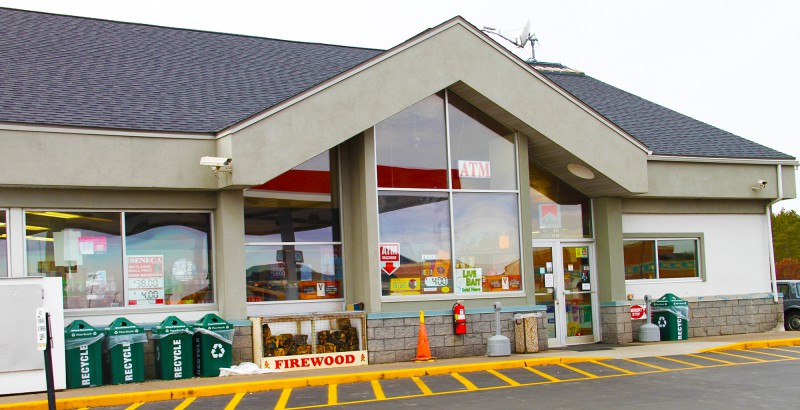SSCS Customer Success Story: Whitetail Crossing (Part 2)
This is Part 2 of a two-part profile. Read Part 1 here.
A Marriage Made in (Business) Heaven (Pt. 2)
With the help of SSCS and its technology, the Ho-Chunk Nation of Wisconsin undertook a five month project to improve inventory management across the enterprise. Here’s how it all went down.
Whitetail Crossing had been doing a good job of tracking inventory as an enterprise, however the Ho-Chunk Nation knew it could do better.
“We would record only sales transactions on the daily reporting produced by the SSCS back office system, so we had no daily record of inventory cost of goods sold in relation to sales,” Bobbi Johnson, accounting manager for the Ho-Chunk Nation, explains. “We were on a periodic inventory system and wanted to move to a perpetual inventory system that would allow us to go out and verify, at any moment, the number of items on the shelf. The Nation’s financial director and director of the business department decided to overhaul our approach. Everyone wanted to do better so getting buy in from individual store management was easy.”
Thus began a five-month project to analyze and explore ways to ensure that inventory cost of sales values were brought into alignment with total sales numbers, enabling all five stores to access a current and detailed view of inventory movement consistently. The process included cleaning out and restructuring Whitetail Crossing’s entire inventory, as well as standardizing departments and the enterprise’s PLU listing. The undertaking took place on a store by store basis, with up to a month’s break between each site.
The program’s key players included the shift leaders and managers from each store. Bobbi, who as a financial analyst was already intimately familiar with the CDB, was assigned to the project to bring her acute accounting acumen to the operations side, creating a business perspective that incorporated both. Andre LeMire’, SSCS sales engineer, served as a conduit between the project team and the technological component essential to inventory control.
“When you get the kind of current and detailed view the Nation was aiming for, the store positions itself to be proactive when problems related to shrink arise or a brand isn’t moving,” states Andre. “We knew our inventory solution could really assist them in this regard.”
Before the project started, Bobbi played a large role in providing financial training with the team in order to help them understand the advantages of inventory cleanup to the individual. Andre, who would be a liaison during the entire process, helped kick off the proceedings with a needs analysis that incorporated a plan indentifying issues and priorities, milestones, and questions for discussion. It was a collaborative effort involving input from the key players. In addition, Andre provided a one day overview on the CDB to make sure everyone was on the same page regarding SSCS technology. “It helped answer questions about the functionality of the system before we got started and helped make the process more efficient,” Bobbi states.
Once the project started, Andre would make onsite visits from 2–3 days to a week at a time. “I made sure that the data was being processed correctly, that the system was functioning as designed, that employees had consistent access with the correct user’s rights—in short, I helped make sure everything was running smoothly on the SSCS side.”
The sites began to see improvement almost immediately. In addition to reducing the time it took for a site to generate its daily accounting paperwork, the number of inventory adjustments plunged across the entire operation.
“By using the SSCS inventory solution to its full potential, we managed a 73 percent reduction in our end-of-month inventory adjustments,” states Bobbi. “It proved you can substantially reduce both your shrink and mistakes by getting a current view of your inventory movement, which SSCS technology provides.”
Whitetail Crossing realized a number of other real benefits by getting more out of the SSCS inventory module. The sites began to print pricing labels branded with their own logo (underscoring their desire to advertise their store brand more aggressively) and order from their pricing labels, giving them the ability to scan more quickly at the register and improve customer service in addition to pricing accuracy. This methodology also made it easy to reorder items that were out of stock: an employee now can simply scan the label tag to reorder.
With a successful inventory program under their belt, the Whitetail Crossing continues its quest for ongoing operational improvement with the help of SSCS technology. They are currently looking forward to fully utilizing Central Price Book, SSCS’s enterprise pricing control solution, and will soon begin creating their own custom PLUs. This customization will help track products to the precise specifications of Whitetail Crossing and make each cashier’s job easier by providing a more comprehensive approach to price coding that will reduce the time for manual lookup.
“It’s not that we still don’t have challenges—making sure that our staff follows daily procedures so they don’t fall behind still takes an effort,” admits Bobbi, “but the overall operational improvement we’ve experienced is noticeable, and I expect it to continue translating into additional profits as we move forward. Improving how we use technology has improved our ability to manage, and improving how we managed has helped us get the most out of SSCS’ technology.”
Some would say that it’s a marriage made in heaven. Business heaven, that is.








Recent Comments